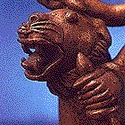
Batik, Constructed garments, Apparel, Domestic Arts/Crafts, Embroidery
Batik of Shanti Niketan, West Bengal
The name “batik” is said to originate from the Indonesian words “amba” which means “to write” and “titik” which means “dots.” A 2000-year-old art form that is prevalent in Indonesia, Malaysia, Japan, and India. The dots are used to make patterns with the molten wax.
Shantiniketan in West Bengal, Mundra in Gujarat, Injambakkam in Tamil Nadu, and Indore in Madhya Pradesh are popular batik destinations in India. Rabindranath Tagore was the first to visit Java in Indonesia, and became captivated with the beautiful art of batik. He returned with some pieces of cloth in the hopes of reviving the ancient technique in India. The study of Batik art was initiated at Shantiniketan’s Vswabharati University. Thousands of artists became interested in the craft, which eventually spread throughout India, resulting in the establishment of three new centres in Gujarat and MP.
Experimentation with Batik continues in India, where we use vegetable colours and natural dyes to minimise costs and develop eco-friendly methods. Aside from dying silk and cotton sarees, the Shantiniketan artistic does batik on leather products such as side pockets, clutches, file covers, wallets, and so on.
Gallery
YOUR VIEWS
PRACTITIONERS: INDIA
Access 70,000+ practitioners in 2500+ crafts across India.
BIBLIOGRAPHY
10,000+ listings on arts, crafts, design, heritage, culture etc.
GLOSSARY
Rich and often unfamiliar vocabulary of crafts and textiles.
SHOP at India InCH
Needs to be written.





